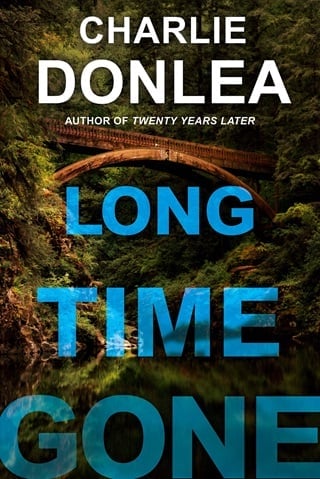Cedar Creek, Nevada - Monday, June 26, 1995 8 Days Prior . . .
Cedar Creek, Nevada
Monday, June 26, 1995 8 Days Prior . . .
DR. RACHEL CRANE WAS THE CHIEF MEDICAL EXAMINER FOR WASHOE County. Her morgue was located in Reno and Sandy knew it well. Over the course of his tenure as Sheriff of neighboring Harrison County he’d visited her on a number of occasions. Dr. Crane handled the postmortem exams when Nevada State Highway Patrol was involved in a case. Baker Jauncey, the man found dead on Highway 67, had been transported to the Reno morgue after the scene was secured and all evidence had been collected. The revelation that Mr. Jauncey was a partner at the Margolis law firm further guided the collision course Sandy was on with the family, and he was happy to have an impartial player such as Rachel Crane handling the autopsy outside of Harrison County.
Sandy made the drive to Reno and now paced Dr. Crane’s office while he waited, finally stopping to peer through the window. He thought back to his visit Saturday morning with Annabelle Margolis and how little sense it made that her car had been found at the scene of the accident if, in fact, she had not been driving it. A trickle of perspiration beaded on the base of his neck before rolling down his spine.
“Sandy,” Dr. Crane said when she entered the office. “I didn’t expect you so soon.”
Pulled back from his thoughts, Sandy turned from the window. “Sorry. I drove straight down after you called. I’m feeling the pinch on this one and need answers before the Harrison County political machine starts churning.”
Dr. Crane nodded. “I’ve tried to stay clear.”
“Lucky you. I’m perpetually in the middle of it.”
“I’m afraid my findings are not going to make your job any easier. I finished the autopsy this morning. I’m still putting my notes together, but I’ll bring you up to speed.”
“Something interesting?”
“Unfortunately, yes. Follow me, it’ll be easier to understand if I show you what I found.”
Sandy followed Dr. Crane out of her office and down a long hallway. The smell of formaldehyde filled his nostrils the closer they got to the double doors he knew led to the morgue. Dr. Crane pushed through the doors while Sandy stayed close behind. In the atrium outside the autopsy suite, they both donned surgical masks before entering. The six stainless steel tables were empty, and Sandy looked curiously at the contraptions that hung from the ceiling above each—a surgical light, an X-ray machine, and various hoses for spraying or washing or vacuuming or whatever other hellish things took place when bodies occupied the tables.
He walked with Dr. Crane to a row of coolers where the bodies were stored—first, before autopsy, and then again as they waited transport to the funeral home. She opened one of the doors and Sandy saw a pair of pale blue feet poking from under a white sheet, an ID tag hung from the big toe. Dr. Crane slid the shelf out and pulled back the sheet without ceremony or prompting. For Dr. Crane, staring at a dead body was a daily ritual to which she was as indifferent as Sandy was about strapping his firearm to his waist.
“Can’t you just tell me what you found, Doc?”
“You didn’t come all the way down to Reno for me to tell you what I found. You need to see it to understand it.”
“Understand what?”
“The giant problem you have on your hands.”
Sandy’s head ached from the thought of going toe-to-toe with the Margolis family. “I’ve got too many problems to count. Are you going to add to my list?”
“Yes. And this will be your biggest,” Dr. Crane said. “Because this guy wasn’t hit by a car.”
 Fullepub
Fullepub 



